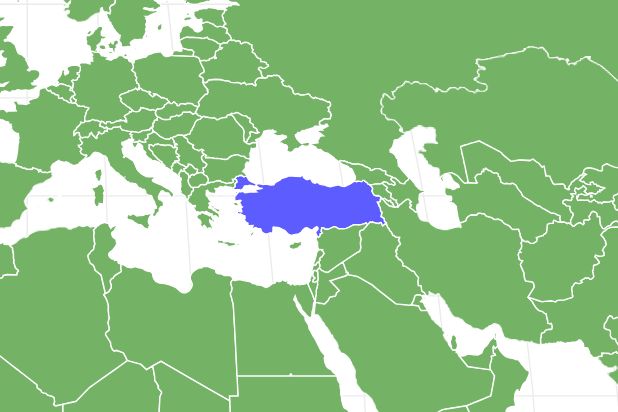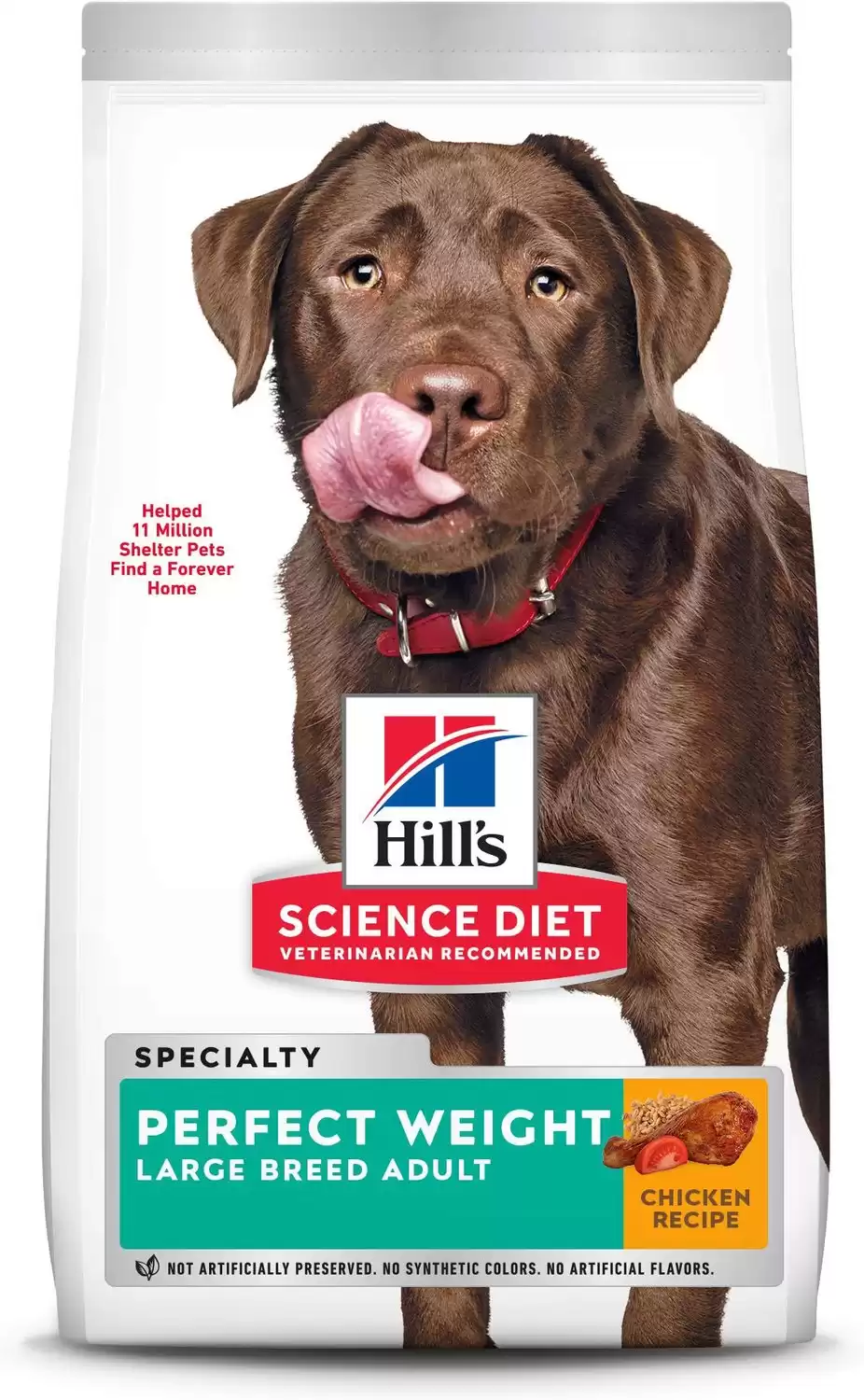Akbash
Canis Lupus
It has loose neck skin for lessening bites and allowing mobility from predators.
Advertisement
Akbash Scientific Classification
- Kingdom
- Animalia
- Phylum
- Chordata
- Class
- Mammalia
- Order
- Carnivora
- Family
- Canidae
- Genus
- Canis
- Scientific Name
- Canis Lupus
Read our Complete Guide to Classification of Animals.
Akbash Conservation Status
Akbash Facts
- Fun Fact
- It has loose neck skin for lessening bites and allowing mobility from predators.
- Distinctive Feature
- Big head and powerful jaws
- Temperament
- Calm, independent, brave and protective
- Training
- Hard
- Diet
- Omnivore
Akbash as a Pet:
- General Health
- Energy Level
- Shedability
- Trainability
- Intelligence
- Tendency to Chew
- Size
- Family and kid friendliness
- Yappiness / Barking
- Moderate
- Separation Anxiety
- Low
- Preferred Temperature
- Cold climate
- Exercise Needs
- Moderate
- Friendly With Other Dogs
- Moderate
- Pure bred cost to own
- $500-900
- Dog group
- Working
- Male weight
- 90-140 lbs
- Female weight
- 75-105 lbs
This post may contain affiliate links to our partners like Chewy, Amazon, and others. Purchasing through these helps us further the A-Z Animals mission to educate about the world's species.
View all of the Akbash images!
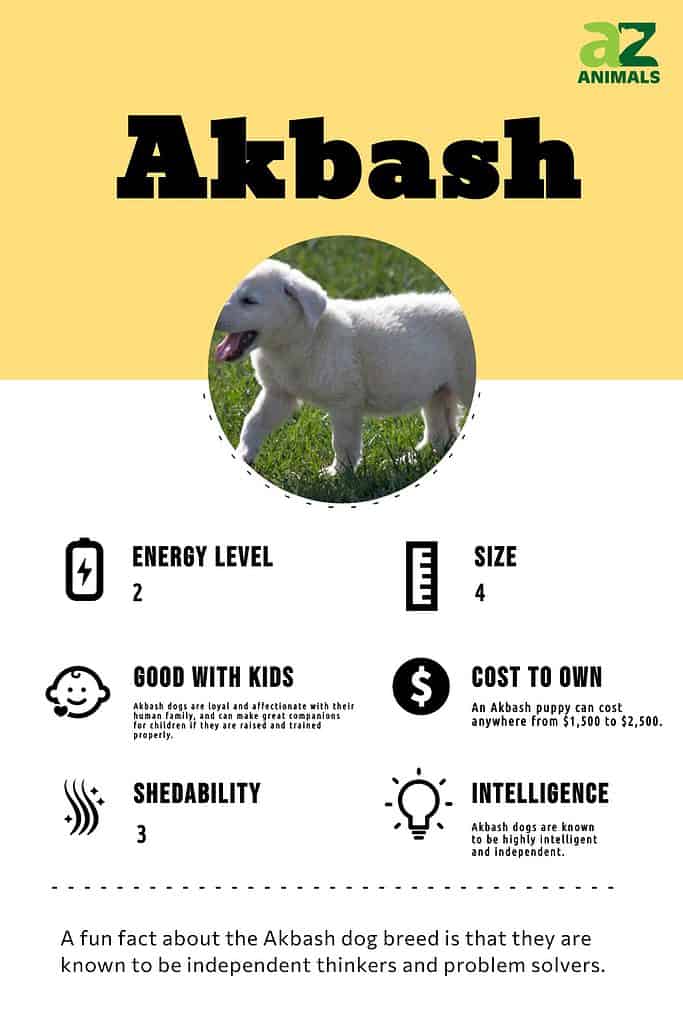
Akbash dogs are a rare breed outside of Turkey.
The Akbash, also called the Coban Kopegi, the Akbas, or Aky, is an ancient large to giant dog breed from Turkey dating back from 3,000 years ago. It was brought to North America in 1970.
One of the best watchdogs, it is part of the Working group of Livestock Guardian Dogs and one of the national dog breeds of Turkey. Its name means “white head” and its white-colored fur easily distinguishes it from predators. It is similar and often compared to the Great Pyrenees.
With a calm, independent, and alert temperament, excellent sight, and lean, muscular body, Akbash are powerful against predators and make an excellent guardian dog, which it still is in Turkey. Its lack of natural hostility makes it a good companion pet.
See all of our expert product reviews.
3 Pros and Cons of Owning Akbash
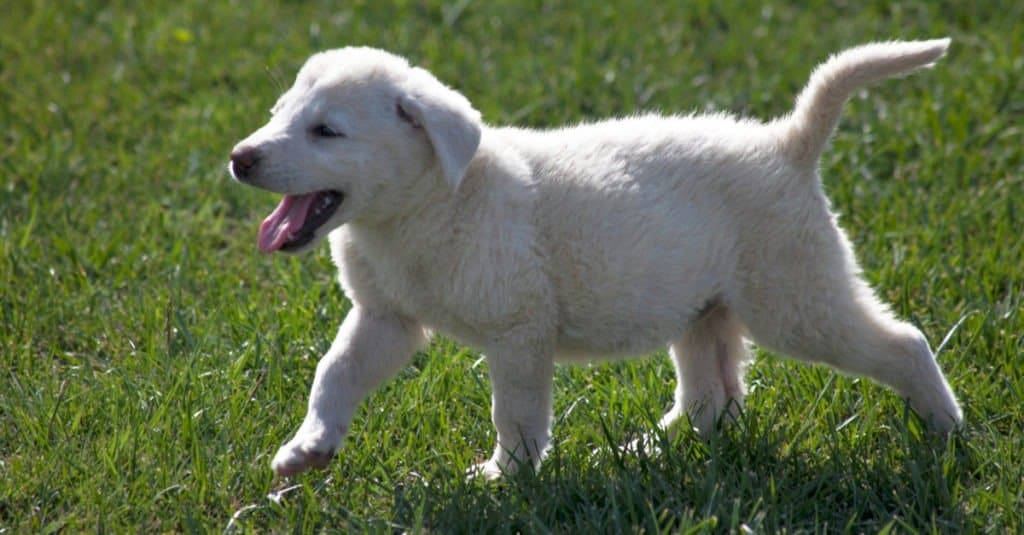
As a working breed, this is a breed that needs you to give it tasks, and it is not suitable for first-time dog owners.
©ehasdemir/Shutterstock.com
| Pros! | Cons! |
| It’s a great guardian. Although it protects livestock best with at least one other canine, it can take on predators such as coyotes, wolves, and even bears. Protective and territorial, it’s also great for watching children, farms, and homes. | It needs a job to do. As a working breed, this is a breed that needs you to give it tasks, and it is not suitable for first-time dog owners. It does not have a strong prey drive and so does not enjoy playing fetch or catch. Also, it is prone to digging holes in the ground or otherwise being destructive if it is bored or cramped. |
| It thinks independently. The Akbash can act on its own without prompting. However, its independent streak and strong-headedness make it necessary to have early training. | It needs roaming space. This breed is not suitable for small spaces due to its large size. It is also prone to wandering or escaping. |
| It’s not naturally hostile. In fact, it has strong maternal instincts and has been observed cleaning newborn calves. | It sheds moderately. Having a double coat, it needs regular grooming and more when shedding or changing its coat. |
Size and Weight
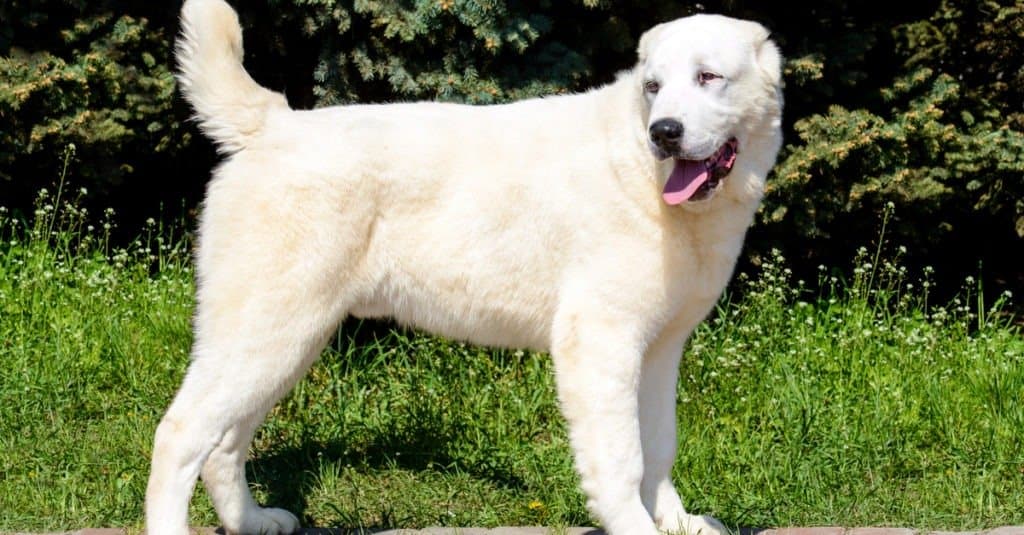
The Akbash is a large to giant size short- to medium- or long-hair dog with an average height of 30″ for males and 28.5″ for females.
©volofin/Shutterstock.com
The Akbash is a large to giant size short- to medium- or long-hair dog with an average height of 30″ for males and 28.5″ for females. Males weigh about 120lbs fully grown and females weigh about 90lbs fully grown. Akbash puppies weigh 13 lbs on average at 7 weeks of age and are typically fully grown between 24-36 months old.
Health and Entertainment for your Akbash
See all of our expert product reviews.
| Height (Male) | 30″ tall |
| Height (Female) | 28.5″ tall |
| Weight (Male) | 120lbs, fully grown |
| Weight (Female) | 90lbs, fully grown |
Common Health Issues

The purebred Akbash is vulnerable to certain health issues that are common in working breeds.
©Teddy Llovet (flythebirdpath > > >) / CC BY 2.0, Flickr – License
The purebred Akbash is vulnerable to certain health issues that are common in working breeds. The most common is hip dysplasia, which affects the ball and socket joints in the hips and can severely range its movement and range of motion later in life, especially when arthritic.
You can decrease the chances of encountering this condition by buying from Orthopedic Foundation for Animals (OFA) hip-certified stock. Gastric torsion (bloat) is another possible condition and it is seen in large breeds. Destructiveness is a main behavioral issue when the Akbash is bored or cooped up which can lead to OCD.
In sum, the most common health issues with the Akbash are:
- Hip dysplasia
- Gastric torsion/bloat
- Obsessive-compulsive disorder (OCD)
Evolution and Origins
The Akbash dog is a breed that actually originated in Turkey. They were developed as a livestock guardian breed, and have been used for centuries to protect sheep and goats from predators such as wolves and bears.
The breed’s name, “Akbash,” means “white head” in Turkish, and refers to the breed’s distinctive white coat. The breed is believed to have developed from crosses between local Turkish breeds and breeds brought to the region by nomadic tribes.
The Akbash was first imported to the United States in the 1970s, and the American Kennel Club recognized the breed in 1997.
Temperament
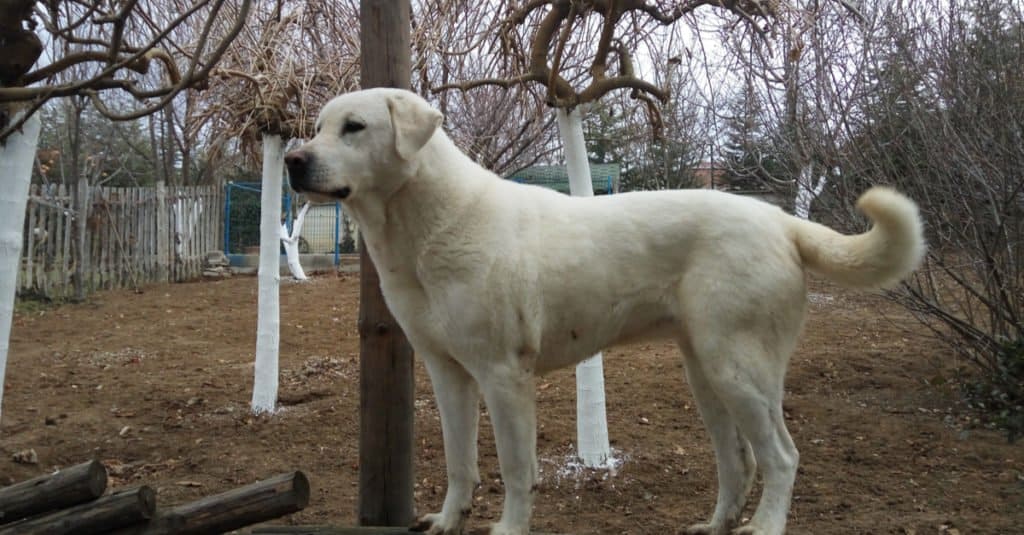
The Akbash have a temperament that is neither shy nor aggressive. Its personality is adaptable.
©bektasaydogan/Shutterstock.com
The Akbash have a temperament that is neither shy nor aggressive. Its personality is adaptable. Some words that describe its traits are: Gentle, calm, patient, adaptable, stoic, protective, affectionate, alert, maternal, loyal, independent, and brave.
The Akbash is a popular choice for farmers needing guardians for livestock or for families with children, since it displays the same behavior towards its flock as it does towards family members, especially when socialized early in life. It is somewhat playful but has a low prey drive and takes longer to mature than smaller breeds, so they lack their full mental capacities until they do.
You can count on the Akbash to have a low tendency to bite since its personality is not naturally hostile. Its natural behavior is suspicious towards strangers, yet its traits of mental awareness and gentleness make it a non-lethal predator deterrent.
How To Take Care of an Akbash
New pet owners looking for how to care for the Akbash, specifically Akbash puppies, must consider factors related to both its working group as well as its unique breed. Whether it’s health issues like hip dysplasia or different care related to hair and large size, the Akbash has unique factors that should be considered.
The Best Dog Food
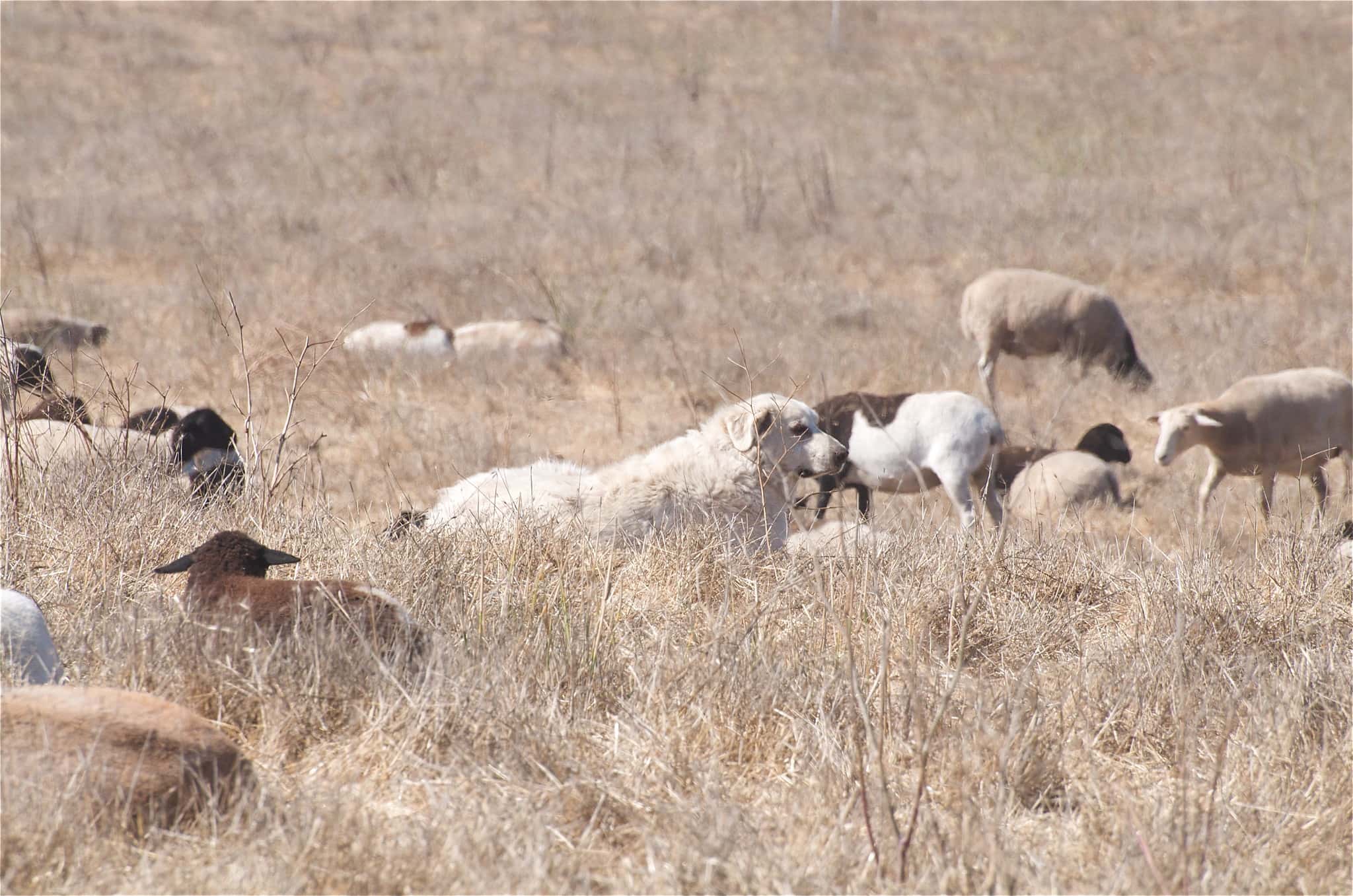
Its diet requirements should provide nutrition to maintain eyesight, mental awareness, and bone health, as well as speed and agility when necessary.
©Jerry Kirkhart (jkirkhart35) / CC BY 2.0, Flickr – License
The Akbash, especially puppies, have different health considerations compared to other breeds and especially non-working dogs. Therefore, even experienced dog owners should consider certain factors when choosing food for their pets:
Its diet requirements should provide nutrition to maintain eyesight, mental awareness, and bone health, as well as speed and agility when necessary. High-quality economic dog food is fine, but red meat is ideal. The Akbash also needs fiber in its diet, which you can provide with vegetables or with dog food containing vegetables. However, to avoid problems like excess weight or bloating (gastric torsion), do not overfeed.
Remove the food from your pet’s dish after 10-15 minutes, and feed your dog no more than two meals a day. Cooked egg, fruit, and cottage cheese are fine as long as they are no more than 10% of the diet. Avoid exercising your dog for one hour before or after meals.
Because Akbash dogs are so large, their diets need a little extra thought to ensure adequate nutrition for bone and joint support. Look for dog food with calcium, chondroitin, and glucosamine.
At A-Z Animals, we believe a solid choice of dog food for Akbash dogs is Hill’s Science Diet Adult Large Breed Specialty Dry Dog Food.
Although this dog food formula is intended for weight control, it’s great for Akbash dogs due to its chondroitin and glucosamine from natural sources and its calcium content.
Here’s where to find Hill’s Science Diet Adult Large Dog Breed Specialty Food on Chewy or Amazon.
- Special chicken recipe dry kibble to provide energy for large breeds
- Promotes lean muscle and controls weight
- Omega-6 fatty acids and Vitamin E for healthy skin and coat
- 28.5lb bag
Akbash puppy dog food: Because of their size and genetic makeup, the Akbash have a tendency to develop hip dysplasia. Whether dry kibble or wet canned food, the food you choose for your Akbash puppy should not only be large breed and age-appropriate but contain high amounts of meat, calcium, and other nutrients for its developing needs. Feed your puppy 3-4 small meals a day or according to directions.
Akbash adult dog food: The Akbash has a slow metabolism and as a natural working breed does well on less food than other breeds, spending most of its time being aware of its environment and patrolling.
Maintenance And Grooming
The Akbash has a double coat which can be short, medium, or even longer. It requires weekly brushing as well as carpet vacuuming, plus more frequent brushing during seasonal shedding periods when it changes its coat. On the plus side, its fur does not mat and does not have much odor. It also does not need special grooming, making its maintenance needs fairly moderate.
Training
Like other breeds, the Akbash needs early training and 3 months is the recommended starting point. It needs a strong, firm but experienced, and patient handler who will not be verbally harsh or physically punishing. This breed acts on its own and is very independent, being able to survive on its own by digging for gophers and other small animals to eat. It is eager to please and once it learns tasks, it does not need prompting.
Exercise
Although the Akbash has a low energy level, it saves its energy for defense against predators. To stay lean, healthy, and happy, it needs 20-40 minutes of exercise every day as well as plenty of room to roam around outside, as it does not enjoy playing indoors and prefers to have some alone time. Special care should be taken to locate the Akbash in a suitable home and property or backyard that it can patrol freely.
Puppies
Akbash puppies are much like puppies of other breeds, with a moderate amount of mouthiness. This habit needs to be trained in them to avoid continuing the behavior as adults. This breed is slow to reach adulthood, reaching full maturity and mental awareness until 2 to 3 years of age.

Akbash puppies are great with children. They are naturally protective of those around them.
©ehasdemir/Shutterstock.com
Children
The Akbash is as submissive to and protective of children as it is of livestock, given early exposure to socialization. In fact, it considers children to be part of its flock. It is affectionate and loyal to its family, but shy and suspicious of strangers without being immediately aggressive towards them. This breed is moderately playful and a good option for families with children.
Dogs similar to Akbash
Sighthounds and mastiffs or molossers are believed to be the Akbash’s ancestors. Breeds similar to the Akbash are other livestock guardian dogs, especially from the Mediterranean Basin (Turkey, Hungary, Italy, Spain, and France). They include the Maremma Sheepdog, Polish Tatra, and Kuvasz.
- Kangal (Canga): Like the Akbash, the Kangal is also from Turkey. However, whereas the Akbash can be exported, the Kangal cannot, and it is likewise considered a national dog breed of Turkey.
- Anatolian Shepherd: It is believed that this breed is a cross between the Akbash and Kangal. Like the Akbash, it is an ancient livestock guardian dog breed from Turkey but differs in its muzzle and coloring.
- Bernese Mountain Dog: Another large dog, this breed dates back 2,000 years and has higher energy than the Akbash.
Akbash vs. Great Pyrenees
The Great Pyrenees looks similar to the Akbash but with a heavier head, less lean body, shorter legs, and longer, heavier-shedding coat. Like the Akbash, the Great Pyrenees has white fur and sometimes has patches of grey or biscuit coloring.
Their ancestors date back to Asia Minor around 10,000 BC and eventually came to Spain and then France, where the breed was developed into that which we know today. Both breeds are about the same height and lifespan, with the Great Pyrenees weighing about 24 lbs (11kg) less as well as having a larger litter size of 7-12 instead of 8-9 puppies.
Famous Akbash Dogs
Although the Akbash is one of the national dog breeds of Turkey and can be exported, it is rarely known outside of the country, where it remains popular as a livestock guardian dog. You can, however, find plenty of owners’ photos of it on Instagram.
Popular Names
Popular names for Akbash include:
- Buddy
- Max
- Rocky
- Jack
- Bear
- Molly
- Bella
- Chloe
- Luna
- Coco
Akbash FAQs (Frequently Asked Questions)
Are Akbash herbivores, carnivores, or omnivores?
Akbash are Omnivores, meaning they eat both plants and other animals.
What Kingdom do Akbash belong to?
Akbash belong to the Kingdom Animalia.
What class do Akbash belong to?
Akbash belong to the class Mammalia.
What phylum to Akbash belong to?
Akbash belong to the phylum Chordata.
What family do Akbash belong to?
Akbash belong to the family Canidae.
What order do Akbash belong to?
Akbash belong to the order Carnivora.
What type of covering do Akbash have?
Akbash are covered in Hair.
What genus do Akbash belong to?
Akbash belong to the genus Canis.
What are some distinguishing features of Akbash?
Akbash have big heads and powerful jaws.
How many babies do Akbash have?
The average number of babies an Akbash has is 8.
What is an interesting fact about Akbash?
Akbash are often used as guard dogs!
What is the scientific name for the Akbash?
The scientific name for the Akbash is Canis Lupus.
What is an Akbash?
The Akbash is a large to giant size, short to medium-haired, ancient working breed from Turkey that was bred as a livestock guardian.
How do you pronounce Akbash?
“Aak baash”
Are Akbash dogs good pets?
Yes, Akbash make good pets as long as they have enough space and an owner who has previous experience handling, training, or owning dogs.
Do Akbash bark a lot?
Akbash have a moderate tendency to bark and will bark to alert their owners or flock of danger or predators. They may also bark a lot if bored or cooped up.
Are Akbash dogs aggressive?
No, they are not. They are protective towards their family and flock but shy of strangers and are not naturally hostile, with a low tendency to bite.
What are the key differences between Akbash and Great Pyrenees?
The key differences between Akbash and Great Pyrenees are size, appearance, origin, and AKC recognition.
Thank you for reading! Have some feedback for us? Contact the AZ Animals editorial team.
Sources
- wipidepdia.com, Available here: https://en.wikipedia.org/wiki/Akbash
- dogell.com, Available here: https://dogell.com/en/dog-breed/akbash-dog
- , Available here: https://www.dogbreedslist.info/all-dog-breeds/Akbash-Dog.html
- , Available here: https://dogtime.com/dog-breeds/akbash
- , Available here: https://www.hillspet.com/dog-care/dog-breeds/akbash-dog
- , Available here: http://www.vetstreet.com/dogs/akbash-dog
- , Available here: https://www.dogbreedinfo.com/a/akbashdog.htm
- , Available here: https://www.101dogbreeds.com/akbash.asp
- , Available here: https://yourdogadvisor.com/akbash/
- , Available here: https://www.puppyfind.com/akbash.php
- , Available here: https://nationalpurebreddogday.com/how-well-do-you-know-your-lgd/
- , Available here: https://puppyweightcalculator.com/results/#wpcf7-f15-p57-o1
- , Available here: https://www.mydogbreeds.com/great-pyrenees-vs-akbash-dog

